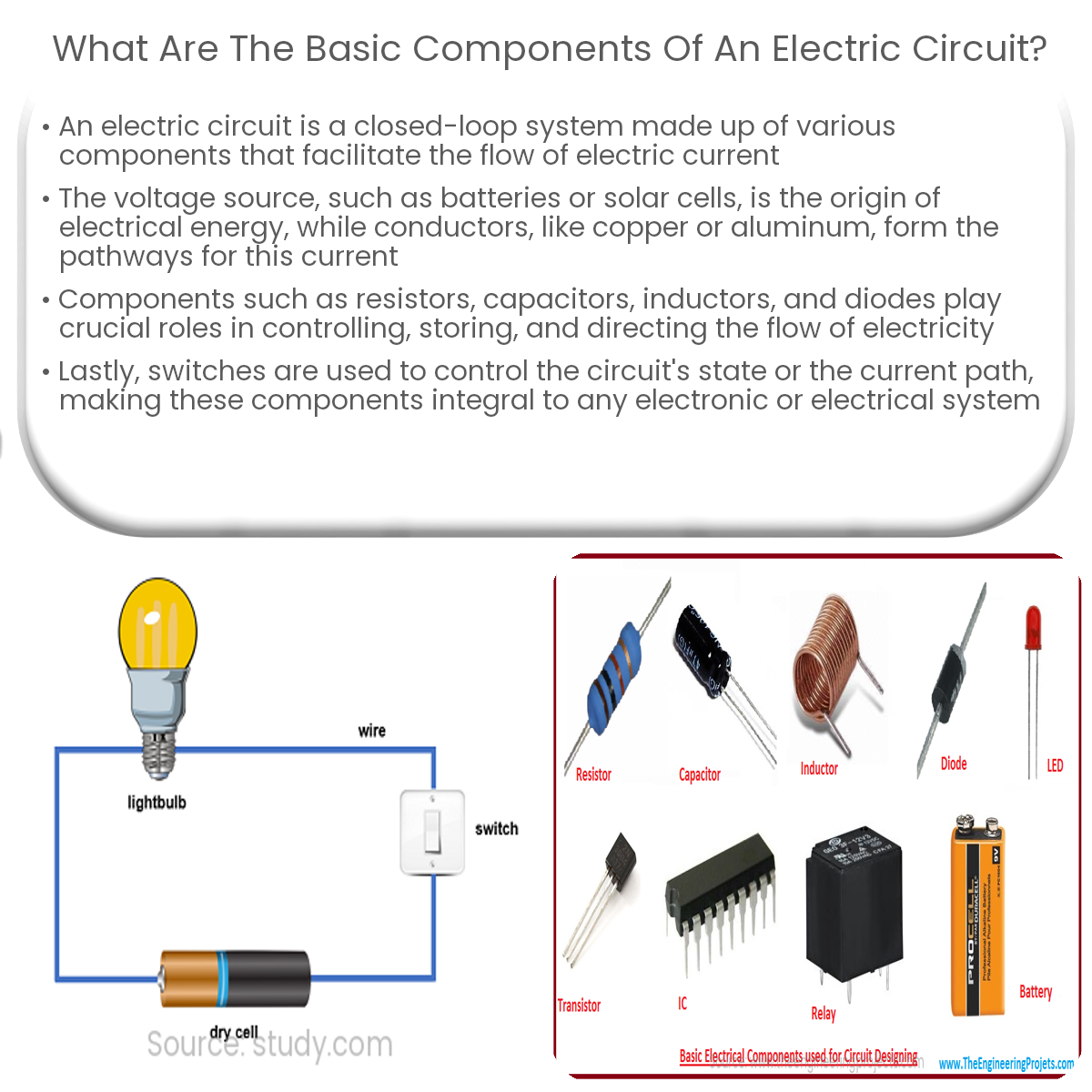Basic components of an electric circuit include a voltage source, conductors, resistors, capacitors, inductors, diodes, and switches.
Basic Components of an Electric Circuit
An electric circuit is a closed-loop system that enables the flow of electric current through interconnected components. Understanding the basic components of an electric circuit is crucial for anyone interested in electronics or electrical engineering. This article will discuss the essential components that make up an electric circuit.
1. Voltage Source
The voltage source is the origin of electrical energy in a circuit. It creates an electric potential difference, which drives the flow of electric current. Common voltage sources include:
- Batteries
- Power supplies
- Generators
- Solar cells
2. Conductors
Conductors are materials that allow electric current to flow with minimal resistance. They form the pathways that connect the various components within a circuit. Common conductors include:
- Copper
- Aluminum
- Gold
- Silver
Conductors are often insulated with non-conductive materials, such as plastic or rubber, to prevent short circuits and protect users from electric shock.
3. Resistors
Resistors are passive components that limit or control the flow of electric current in a circuit. They are used to set specific voltage or current levels, divide voltage, and protect other components from excessive current. Resistors are typically made from materials with higher resistance than conductors, such as carbon or metal films.
4. Capacitors
Capacitors are components that store and release electrical energy in a circuit. They are used to smooth out voltage fluctuations, filter signals, and store energy for later use. Capacitors consist of two conductive plates separated by an insulating material, known as a dielectric.
5. Inductors
Inductors are passive components that store energy in a magnetic field when electric current flows through a coil of wire. They are used to filter signals, limit current changes, and store energy in circuits. Inductors oppose sudden changes in current, making them useful in various applications, such as power supplies and filters.
6. Diodes
Diodes are semiconductor devices that allow electric current to flow in one direction while blocking it in the opposite direction. They are used for rectification, voltage regulation, and signal modulation. Common types of diodes include:
- Rectifier diodes
- Zener diodes
- Light-emitting diodes (LEDs)
7. Switches
Switches are devices used to control the flow of electric current within a circuit. They can be used to turn the circuit on or off, change the current path, or control specific components. Switches can be mechanical, such as push-buttons and toggle switches, or electronic, like transistors and relays.
In conclusion, understanding the basic components of an electric circuit is essential for anyone interested in electronics or electrical engineering. These components, including voltage sources, conductors, resistors, capacitors, inductors, diodes, and switches, form the building blocks of various electrical and electronic devices.


